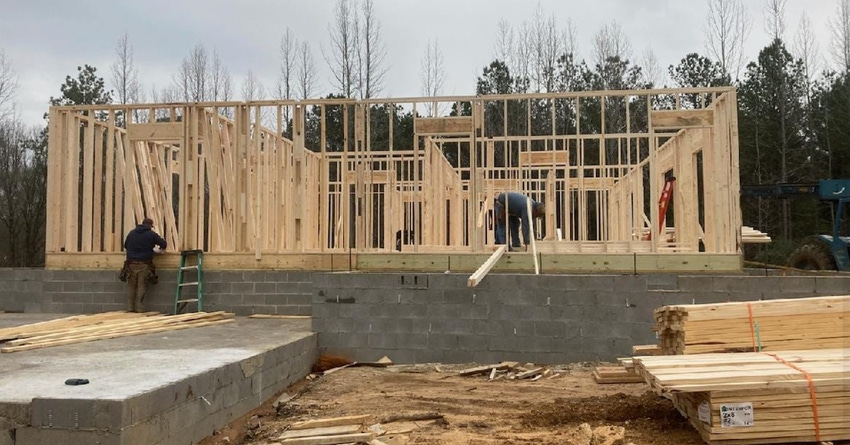
For those of us who grew up and moved away from home, going back can sometimes be bittersweet.
Of course, the reunion with friends and family is most likely gladly received, but the drive around your old stomping grounds is also likely a reminder of how rapidly things can change.
The neighboring farm is now a subdivision. A strip mall occupies that once pretty pasture dotted with Black Angus cattle. The woods where you played as a child have been bulldozed to make room for a fast-food restaurant.
It’s progress, right? An inevitable part of life.
Leon Kolankiewicz, an environmental planner who has spent decades studying urban sprawl has another word for it — unsustainable.
“The average destruction of 1,200 square miles of farmland and habitat per year would be unsustainable for a country that desires the continued capability of food independence within its borders,” Kolankiewicz said.
For nearly 30 years, Kolankiewicz has studied urban sprawl and its effects on the environment. He has been a lead author of more than a dozen studies on sprawl, with his most recent study released this spring.
The report states that between 2002 and 2017 the federal Natural Resources Conservation Service identified around 17,800 square miles of new sprawl. That means 17,800 square miles of natural and agricultural land were converted during that 15-year period into developed land for residential, commercial, industrial, transportation, and other purposes.
“The good news is that the rapacious rate of open space destruction of the 1980s and 1990s has slowed considerably,” he said, “but urban sprawl continues to apply the chainsaw and bulldozer blades to vast amounts of rural land each year.”
The study is available online and provides a state-by-state breakdown of lost open space. (https://sprawlusa.com)
Denser living didn’t work
In the United States, nearly all government efforts to combat sprawl have focused on strategies which primarily seek to create denser settlement by changing land use practices. For example, constructing more urban apartment high-rises, rather than single-family homes. A practice Kolankiewicz terms “pack ‘em and stack ‘em.”
“Our findings indicate that approach will have limited success in saving rural land from development because it fails to address the key reason for current sprawl – population growth. Twenty six states successfully reduced their per-capita land use over the past two decades thanks to denser living — yet all 26 still lost open space. The absolute growth of the U.S. population, which increased by 37 million people from 2002 to 2017, more than canceled out any per-capita improvements,” he said.
Further, Kolankiewicz concedes that the extent to which factors such as the COVID-19 pandemic may affect the rate of per capita sprawl in the coming decades is unknown and unpredictable.
“It may well be, for example, that concerns about high density residential living in the face of pandemics could increase sprawl pressures by raising the preference of consumers for lower-density suburban neighborhoods,” he said.
Conservation, population at odds
President Biden has challenged federal agencies to meet a goal of conserving 30% of our lands and waters by 2030. A report on the “Conserving and Restoring America the Beautiful” plan states, “The ambition of this goal reflects the urgency of the challenges we face: the need to do more to safeguard the drinking water, clean air, food supplies, and wildlife upon which we all depend; the need to fight climate change with the natural solutions that our forests, agricultural lands, and the ocean provide; and the need to give every child in America the chance to experience the wonders of nature.”
Kolankiewicz agrees the plan to conserve open space is noble, but counters that the Biden administration's own policies are at odds with conservation.
“Many of the same politicians and groups who are ambitiously calling for protecting 30% of the United States land area from development by 2030 are also advocating large increases in immigration that would swell the U.S. population even further. Most fail to even recognize that U.S. population growth is a major factor in causing the loss of open space and natural habitat in the United States,” he said.
The U.S. population currently exceeds 332 million people. Studies show we are on track to reach 350 million by the end of this decade and top 400 million by 2060.
So how do we moderate population growth to manage loss of farmland? Kolankiewicz says the answer is straightforward, although politically challenging.
“Migration from other countries is the primary driver of U.S. population growth. In fact, Pew Research projects that “88% of the increase” in the population over the next several decades will be ‘linked to future immigrants and their descendants,’” he said. “Curtailing the level of future migration is the only way to save our open spaces.”
“That’s not a reflection on our immigrant friends and neighbors who are overwhelmingly law-abiding contributors to our society,” he continued. “It’s simply an acknowledgement that the current influx of foreign nationals is driving our population growth, which in turn is taking up our open spaces. Our leaders can preserve our open spaces by stabilizing our population. Or they can maintain the status quo and let sprawl continue unchecked. But they can’t do both.”
About the Author(s)
You May Also Like






